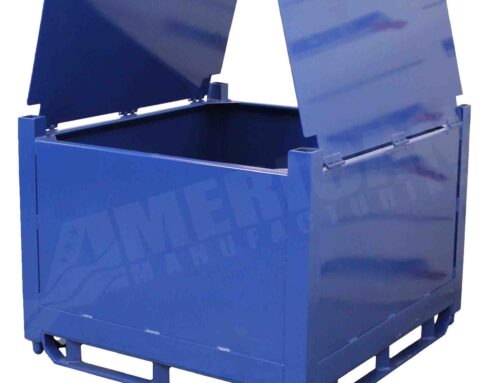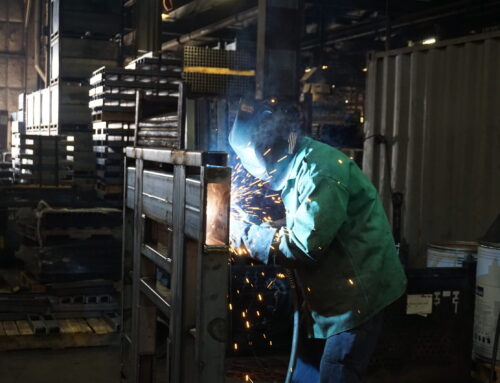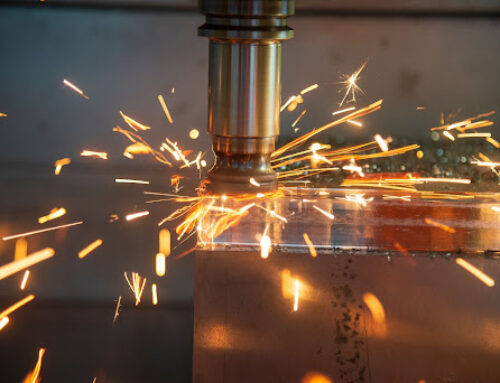Manufacturing industry overview
The manufacturing industry is of high importance to the American economy. In 2016, the United States manufacturing sector would’ve stood alone as the ninth-largest economy in the world, according to the National Association of Manufacturers. As with many industries, the manufacturing industry faces both unique challenges and opportunities for advancement. Some of the challenges manufacturers are facing include market volatility, rising material cost and growing pressure to reduce prices. In an effort to combat these challenges, many manufacturers are also working to improve their performance across capabilities, strengthen their relationships with consumers and are seeking out the right people with the necessary skills and experience to help their businesses succeed. To achieve such goals, manufacturers are investing in ways to improve their productivity and speed responsiveness. This could include investments in lean manufacturing systems or more proficient uses of manufacturing technology.
The future of manufacturing also requires creative and resourceful leadership focusing on long-term solutions to supporting adaptability and resilience. “This period of disruption presents significant opportunities for innovative thinkers who are ready to take leadership with the future of manufacturing,” and requires a strategy for “a culture of innovation,” according to Forbes. The professional service firm, Deloit, also speaks to the topic of innovation and notes that “digital muscle building” could be a potential leverage point in order to increase flexibility in global supply chains. Additionally, manufacturers’ abilities to find bright spots, including emerging markets, with their ability to “flex production, delivery and customer support will be important.” Purchase factors for consumers are also expected to continue to follow the current trends where time to delivery has become a key competitive advantage and differentiator.
Manufacturing has experienced rapid advancement within the past decades. Developments have been largely due to need-based changes involving new processes, materials and supporting technology.
Robotics
Advancements in manufacturing robotics come from better safety standards and smarter manufacturing technologies, helping them to be utilized more frequently. Manufacturing robotics are often used to support human co-workers by increasing production rates. When individuals no longer have to perform tasks that robots can do, they can put their energy towards contributing to higher organizational roles. In fact, as a result of integrating robots, American Manufacturing has created and added additional human jobs and are able to better appropriate workers to do more skilled tasks. Repetitive tasks and jobs that are dangerous, or include high volume material, are sometimes better suited for manufacturing robots. 23 percent of unplanned downtime in the manufacturing sector occurs due to human error, according to market research company Vanson Bourne. The manufacturing industry, in particular, is subject to such downtime as one mistake can slow down or stop an entire assembly line. If you’re interested in seeing how the plasma cutting robot at American Manufacturing is able to provide speed and accuracy when setting parts into a fixture, view our robots in action.
 Projected demand for advanced robots in manufacturing is expected to rise to $3.7 billion and grow at a compound annual growth rate of 46 percent by 2021 worldwide, according to Statistica. Individuals around the world are recognizing the use of manufacturing robots and the role of technology. A study from MIT stated, “robotics and related technologies are central to the ongoing digitization and advancement of manufacturing.”
Projected demand for advanced robots in manufacturing is expected to rise to $3.7 billion and grow at a compound annual growth rate of 46 percent by 2021 worldwide, according to Statistica. Individuals around the world are recognizing the use of manufacturing robots and the role of technology. A study from MIT stated, “robotics and related technologies are central to the ongoing digitization and advancement of manufacturing.”
The benefits of robotics and advanced manufacturing technologies include giving manufacturers the ability to save time and money by increasing productivity and minimizing downtime. They’re also scalable, meaning they can be used in both high and low volume manufacturing environments. At American Manufacturing, our manufacturing robots can also be accessible for your needs. See how they’re able to cut and weld your parts.
Digital advancements in manufacturing
Digital and technological developments have been a part of the evolving manufacturing industry. The internet has continually contributed to making industrial manufacturing services more accessible to consumers, making barriers between manufacturers and consumers comparably lower. It has also provided increased levels of accessibility and affordability to manufacturers, potentially attributing to increased innovation. In general, manufacturing services are more widely accessible to potential consumers, according to Analytics Insight.
American Manufacturing is in the process of upgrading the digital aspects of its manufacturing process. Specifically, the ERP system is being revamped which will improve a variety of aspects including making quoting faster, passing along savings and making process improvements for the customer much easier. Overall, it will streamline the process and make American Manufacturing more digitally advanced through increasing quality and collapsing lead time in a lot of products.
Widespread accessible automation
Within manufacturing, accessible automation is not completely new. The advancement lies in widespread adoption. Technology advancement in manufacturing has made automation more accessible to a greater number of manufacturers, enabling them to change the way they operate. Automation can be made increasingly possible with robotics solutions which can help to reduce costs and optimize workflow.
The investment into our production saws have automated our material processing by using precise CNC equipment to now perform our processing tasks. The benefit of these saws is that they are far more precise and cut twice as fast as the previous saws. American Manufacturing also invested in new RH 33 and MB 18 CNC vertical milling machines which allow for creating highly specific machined parts and tubes at a faster rate with more consistent quality.
American Manufacturing robotics and technology
At American Manufacturing, we’re proud to be able to utilize our automation efforts for our customers’ benefit. We offer robotic welding, robotic plasma cutting and production saw cutting. We’re able to perform 3D plasma cutting for intricate production parts and can produce a quality cut part within almost any tolerance. We have served various industries such as alternative energy, automotive, distribution, military defense and many more. We’re excited to be integrating our new ERP system and doing a full digital transition. Please don’t hesitate to contact us if you would like to learn more about our extensive robotic capabilities. We would be happy to discuss our ability to create true turnkey components, weldments and assemblies for you.






Leave A Comment